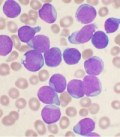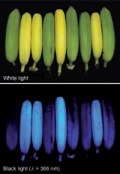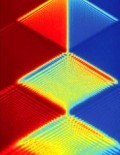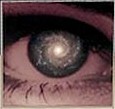 Yellow and black bile were considered by the ancients as two of the four vital humours of the human body along with phlegm and blood. Ancient and mediaeval Greco-Roman alternative medicine. Imbalances in these humours caused illness. The Greek names for the terms gave rise to the words “choler” (bile) [the prefix in cholesterol, of course] and “melancholia” (black bile). Excessive bile was supposed to produce an aggressive temperament, known as “choleric” and cause “biliousness.” Depression and other mental illnesses (melancholia) were ascribed to a bodily surplus of black bile.
Yellow and black bile were considered by the ancients as two of the four vital humours of the human body along with phlegm and blood. Ancient and mediaeval Greco-Roman alternative medicine. Imbalances in these humours caused illness. The Greek names for the terms gave rise to the words “choler” (bile) [the prefix in cholesterol, of course] and “melancholia” (black bile). Excessive bile was supposed to produce an aggressive temperament, known as “choleric” and cause “biliousness.” Depression and other mental illnesses (melancholia) were ascribed to a bodily surplus of black bile.
We now know that bile is far more complex than that. The liver secretes bile into the gall bladder, which concentrates it and releases it into the duodenum. It is mainly composed of bile acids, which are an essential component of the digestive juices needed to absorb fats, proteins and fat-soluble vitamins. Bile also plays an excretory role in getting rid of cholesterol, bilirubin and worn out proteins, eliminating drugs, metabolites, toxins and heavy metals.
Bile also contains phospholipids (predominantly phosphatidylcholine), proteins, amino acids, nucleotides, vitamins, bilirubin and other organic anions and various inorganic substances. The overall composition is regulated by the liver but liver disease and malignancy of the biliary system can disrupt its chemical makeup. Now, researchers are looking at the NMR spectra of bile and other bodily fluids to help them diagnose and monitor illness and potentially to improve the outcome for liver transplant surgery.
I report details of the study in the new issue of SpectroscopyNOW’s NMR ezine.
“The study is just a small part of a much bigger project where we are examining the usefulness of metabonomics to monitor the outcome of liver transplants,” team member John Lindon of Imperial College London told me. “We have already published a paper on using NMR spectroscopy of intact human liver tissue biopsies in Analytical Chemistry (using high resolution magic-angle-spinning proton NMR) and we have several more publications submitted and in preparation,” he added.
The bile research is part of a collaboration between Lindon’s team at IC, Elaine Holmes and her team and the Liver Transplant team at King’s College Hospital, London. Colleagues from Portugal, with funding from the British Council, visited IC and also worked on the project there, as well as doing some of the analysis back in Portugal.
This particular study provides a baseline so that researchers know precisely what constitutes bile. “We plan to look for differences between biles from livers before transplantation and after transplantation,” adds Lindon, “knowing clinically what the liver status is.” This work could reveal biomarkers that could be used to distinguish between good graft function and poor function.
The metabolic profile of any biofluid is very complex and changes in this can be used for disease diagnosis or for looking at the beneficial effects of drugs or the detrimental effects of toxins. The changes can be subtle and complex and so the researchers use cheminformatics, in the form of multivariate statistics, to tease out the most significant effects. They are also studying the liver tissue itself and blood plasma.
![]() Iola F. Duarte, Cristina Legido-Quigley, David A. Parker, Jonathan R. Swann, Manfred Spraul, Ulrich Braumann, Ana M. Gil, Elaine Holmes, Jeremy K. Nicholson, Gerard M. Murphy, Hector Vilca-Melendez, Nigel Heaton, John C. Lindon (2009). Identification of metabolites in human hepatic bile using 800 MHz 1H NMR spectroscopy, HPLC-NMR/MS and UPLC-MS Molecular BioSystems DOI: 10.1039/b814426e
Iola F. Duarte, Cristina Legido-Quigley, David A. Parker, Jonathan R. Swann, Manfred Spraul, Ulrich Braumann, Ana M. Gil, Elaine Holmes, Jeremy K. Nicholson, Gerard M. Murphy, Hector Vilca-Melendez, Nigel Heaton, John C. Lindon (2009). Identification of metabolites in human hepatic bile using 800 MHz 1H NMR spectroscopy, HPLC-NMR/MS and UPLC-MS Molecular BioSystems DOI: 10.1039/b814426e
 The first 2009 issue of SpectroscopyNOW is now available:
The first 2009 issue of SpectroscopyNOW is now available: Congratulations to
Congratulations to  Also, this week “Yes, we have blue bananas!” – Forget the so-called
Also, this week “Yes, we have blue bananas!” – Forget the so-called  In environmental news, recent insights into dust from the Sahara could improve our understanding of climate change. Finally, dust of another kind is being used in an entirely different way, by British researchers to protect a new type of thermometer used to measure the 3000 Kelvin temperatures of an explosion.
In environmental news, recent insights into dust from the Sahara could improve our understanding of climate change. Finally, dust of another kind is being used in an entirely different way, by British researchers to protect a new type of thermometer used to measure the 3000 Kelvin temperatures of an explosion. The latest issue of my SpectroscopyNOW column is now online. In this issue, having sampled a little
The latest issue of my SpectroscopyNOW column is now online. In this issue, having sampled a little  This week in my SpectroscopyNOW column, I have four new posts covering, as usual, a wide range of solutions to scientific and technical problems. First up, is the discovery that compounds found in cannabis could lead to novel antibiotics that are less susceptible to resistance than conventional drugs. Then, we have a new type of spectroscopy that allows scientists to carry out broadband analysis of artificial atoms held at temperatures close to absolute zero. Next, is word from chemists that they have developed a new type of reaction flask that can carry out reactions in the solid state. Finally, this week, we hear of testing times for biomass, where modern spectral analysis could help in the processing of old, treated wood as a renewable fuel resource.
This week in my SpectroscopyNOW column, I have four new posts covering, as usual, a wide range of solutions to scientific and technical problems. First up, is the discovery that compounds found in cannabis could lead to novel antibiotics that are less susceptible to resistance than conventional drugs. Then, we have a new type of spectroscopy that allows scientists to carry out broadband analysis of artificial atoms held at temperatures close to absolute zero. Next, is word from chemists that they have developed a new type of reaction flask that can carry out reactions in the solid state. Finally, this week, we hear of testing times for biomass, where modern spectral analysis could help in the processing of old, treated wood as a renewable fuel resource. It’s that time of the month again, so here’s the latest round-up from my column over on SpectroscopyNOW, covering a whole range of science and medical news with a spectral twist from magnetic resonance to Raman by way of fishnets and infra-red.
It’s that time of the month again, so here’s the latest round-up from my column over on SpectroscopyNOW, covering a whole range of science and medical news with a spectral twist from magnetic resonance to Raman by way of fishnets and infra-red. Apparently, scientific thought needs rekindling, seemingly it has run out of kindle and needs a new flame if it is to burn brighter. In steps Terence Witt with the concept of null physics. Witt has now self-published a hefty tome by the name of Our Undiscovered Universe.
Apparently, scientific thought needs rekindling, seemingly it has run out of kindle and needs a new flame if it is to burn brighter. In steps Terence Witt with the concept of null physics. Witt has now self-published a hefty tome by the name of Our Undiscovered Universe. Here is a sneak preview of the various science news items I have scheduled to appear on August 15 over on SpectroscopyNOW.com
Here is a sneak preview of the various science news items I have scheduled to appear on August 15 over on SpectroscopyNOW.com